Carnatic musicians are undoubtedly creative. Sangita Kalanidhi designate S. Sowmya and vocalist Vidya Kalyanaraman make soaps in vibrant hues and fun shapes, Gayathri Girish puts up golus in the most mind-boggling themes, Lalgudi Vijayalakshmi captures stunning photographs of nature and writes poetry, and Krithika Natarajan makes colourful, hand-crafted jewellery. As much as I am awed by their creativity, I’m also inspired by their ability to devote time to the pursuit of a non-musical passion amidst their physically and intellectually exhausting performing, teaching, learning and practising schedules. I speak to two multi-talented musicians, senior vocalist Vasundhra Rajagopal (who runs A Pinch of Turmeric, a health and wellness website and store) and young Jayakrishnan Unni, disciple of Neyveli Santhanagopalan, and an accomplished artist and painter.
The first steps
Vasundhra says she was a late bloomer as far as cooking is concerned. Her earliest memory of the kitchen is from the time she was about 10 years old and practising music under her mother’s supervision in the kitchen. “One minute I was singing and the next minute the pressure cooker blew a valve and it rained half-cooked rice and moong dal all over,” she says. “Cowering under my raised arms, I sat petrified, watching myself, my shruti box and music book covered with rice and dal. Needless to say, that put a quick end to any culinary aspirations I may have subconsciously had. I couldn’t cook to save my life, and of course, I never went near a pressure cooker again. Whatever I cook today, I learnt and developed after I got married.”
Marriage took Vasundhra half way across the world, to Toronto. “When my guru late Shri T.R. Subramaniam came to Toronto, he quickly realised my lack of prowess in the kitchen. So, he would say, ‘Nee siramappadaathe maa. Enakku toast jam kuduthaa porum.’ (‘Don’t trouble yourself, maa. Bread and jam will do for me.’). Later on, after I developed some culinary skills, many a musician has stayed with us in Toronto and cooking became as natural to me as music. Fortunately, my husband is a decent cook, so we didn’t starve in the early days of our marriage,” she chuckles.

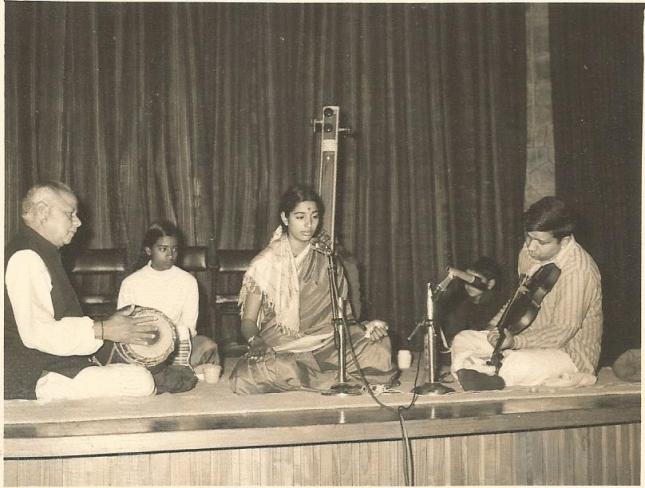
Young Jayakrishnan’s aptitude for both painting and music were discovered when he was barely three years old. “As a baby, my grandmother noticed that I had a ear for music,” he recollects. “I am told that I used to respond excitedly to chenda beats in temple festivals (we had two beautiful temples near our house in Chalakudy, Kerala) as a two-year-old. So as soon as I turned three, I was taken to mridangam classes with Shri Annamannada Suresh, a disciple of Karaikudi Mani sir. Around the same time, I also started learning vocal music from Smt. Lalitha teacher and Shri Chandramana Narayanan Namboodiri.

After we moved to Chennai in 1999, I began to learn the mridangam from Karaikudi Mani sir and his disciples Shri Vijayan and Shri Sasi. It was through Shri Vijayan that I came under the tutelage of Shri Ajay Namboodiri, then a disciple of Shri T.R. Subramaniam, for vocal music. Ajay sir was the best teacher one could ask for, and I cherish our relationship. In 2001, he started learning from Neyveli Santhanagopalan sir. In 2005, I got an opportunity to attend a group class taught by Neyveli sir. He taught us Vallabha Nayakasya, and I was spellbound! Since then I have been learning from Neyveli sir. Both on stage and off, I have learnt so much from him. I also consider myself fortunate to have been guided briefly by Shri Mavelikkara Subrahmaniam, Smt. Lalitha Bhanu and Shri S.R. Janakiraman sir, as well as Shri V. Balasubramaniam (a disciple of late Shri Veena Dhandapani) who taught me the veena.”
Jayakrishnan also had a precocious talent for art. “It all began with my parents struggling to satisfy my demands — as a three-year-old — for the perfect illustration of the digit ‘three’ and using that to drawing the perfect little bird. I used to throw tantrums over the symmetry of the two curves of the ‘3’. The same went for the little bird — the two circles had to be perfect, and the head needed to be smaller by a particular degree, no more, no less.
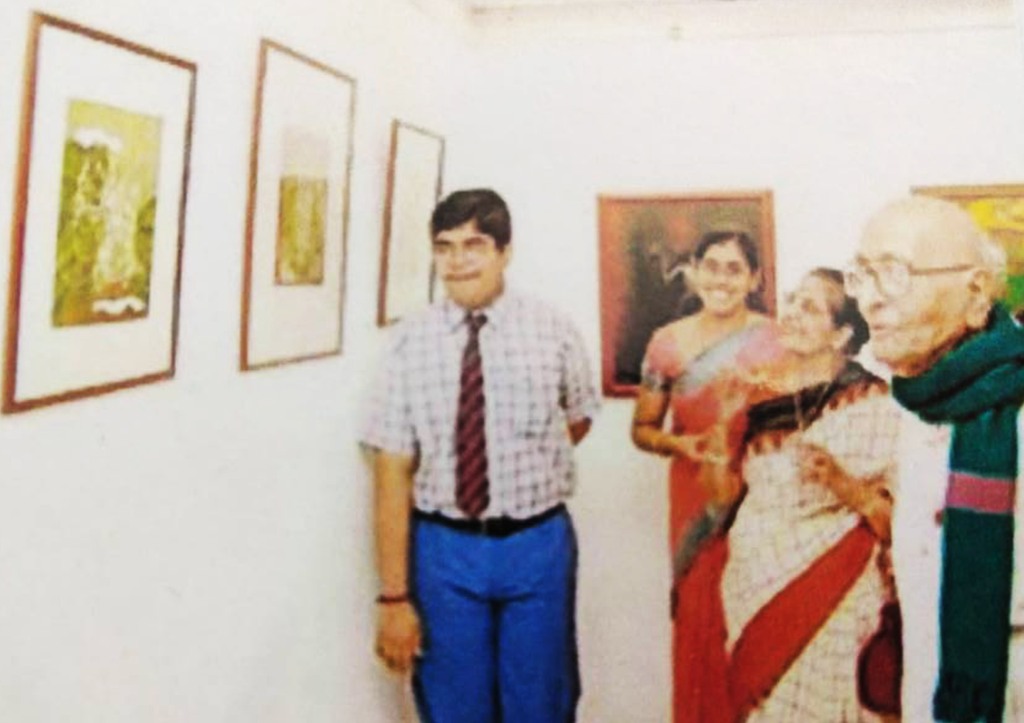
My foundations in art were mostly self-learnt. In 2000, I started taking classes from Smt. Lakshmi Raghavan at the Adyar Art Club. She was, and continues to be, a very methodical and dedicated teacher. She helped me refine my basics and improve my techniques. Thanks to books gifted to me, I was fortunate to acquaint myself with the works of great masters like David, Vermeer and Caravaggio as a school kid, and a lot of the study paintings I made then have helped me evolve. Later, Shri Sasi Krishnan, my art teacher−mentor from my school, Chettinad Vidyashram, played a huge role in making me involve myself more with art. He is a wonderful artist, and was instrumental in convincing me to put together my first exhibition in 2006. My interactions with Shri S. Rajam sir, Shri M.R.D. Dattan, Shri Keshav and Shri Maniam Selvan have also influenced me a lot.”

Work that speaks for itself
Vasundhra has been making waves recently with A Pinch of Turmeric, her health and wellness website and store. From bio-enzyme cleaners to vasainaippodi soaps, her home-made, chemical-free products have been going off shelves at lightning speed. “A Pinch of Turmeric happened very casually,” she tells me. “After my mother passed away in November 2018, we found an old handwritten recipe book of hers. And it was then that my sisters and I realised that we didn’t know many of her recipes. My daughters also kept asking me for recipes as and when they needed to make something. So they asked me to document all the recipes I knew. And before I knew it, I had become a food blogger!”
One of the challenges Vasundhra faced in the process of formally documenting these recipes was quantifying the ingredients, what with Indian cooking being highly intuitive. “My mother would just throw in the spices into the pot with her fingers — no measurements and no proportions — and would actually get quite annoyed if I asked her to quantity them. She would say ‘uthesamaa podu’ (translates literally to ‘estimate and put’). So when you set out to demystify a recipe you definitely need to make it simple and fail-proof. Even now, for my blog, I have to think about and write down the correct quantities of the ingredients I use so that it is easy for others to follow.”
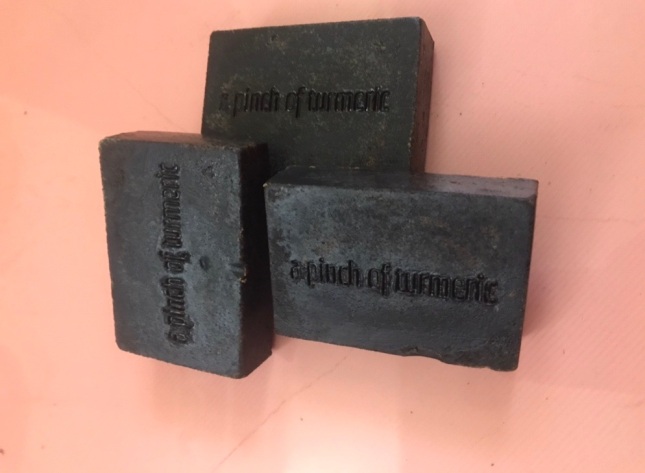
Product sales then happened serendipitously. “One day after Nisha’s daughter was born, I made vaasanaippodi — a herbal bath powder used by generations of South Indians — and posted it. Someone asked whether I would sell them some. Slowly it evolved, and now I have ten products, including vaasanaippodi soap and shikakai podi shampoo bar that I make at home. Then, when sales started picking up I realised there had to be a good motive for doing this. It was not like I wanted to start a business or something! But if people wanted to buy my products, I would donate my profits to a worthwhile cause. The question was, who do I give it to? I asked around and also reached out on Facebook to people asking for recommendations. Aarti Madhusudan (who I didn’t even know at that time) and Viji Ganesh, who work with many NGOs, answered my query and recommended a few options. Through Aarti I got to know about Mr Iyyappan who runs Sri Arunodayam Charitable Trust in Kolathur, Chennai, an organisation that rescues, rehabilitates and takes care of abandoned children with special needs. Without any means he started this, and today has 110 special needs children. His drive, dedication and sincerity are truly inspiring, and his willingness to be our charity partner is something I am really grateful for.”
Like Vasundhra’s recipes, Jayakrishnan’s art speaks for itself. I vividly remember being stunned, several years ago, by a life-like painting of the legend, Shri M.D. Ramanathan, at my guru Shri K.N. Shashikiran’s house. It was Jayakrishnan’s work, gifted by him just then to my guru. “The MDR painting was done in 2009,” he smiles. “I was moved by his Navarasa shloka rendition and wanted to do a tribute to it. The shloka literally danced to his ragamalika, especially the Sahana, Atana and Kapi bits in his rendition. I interpreted him through the navarasas of kathakali and drew a series of paintings on this theme.” Has he drawn other musicians, I wonder. “Indeed,” he smiles. “I have attempted a few — Shri T.N. Krishnan, Shri N. Ramani, Shri Karaikudi Mani, Shri T.N. Seshagopalan, M.S. amma and Santhanagopalan sir, among others.”



A wide repertoire
Vasundhra likes to experiment, both with food and music. “My guru, vidwan Shri T.R. Subramaniam, would say that one always needs to push the boundaries of music. In his Music College days, he had made a bold claim to the musical giants who were there that what was being taught as different pallavis was actually only one pallavi with different words, as the structure or aasu was the same. Drawing inspiration from that, I once chose eight different lines from Periazhwar’s pasuram ‘pallandu pallandu’. I used the first two lines for the pallavi aasu and used the other six lines in the same structure for the ragamalika portion in three ragas. In the end, when all the lines are sung together in the different ragas, you have sung the entire pasuram also.”
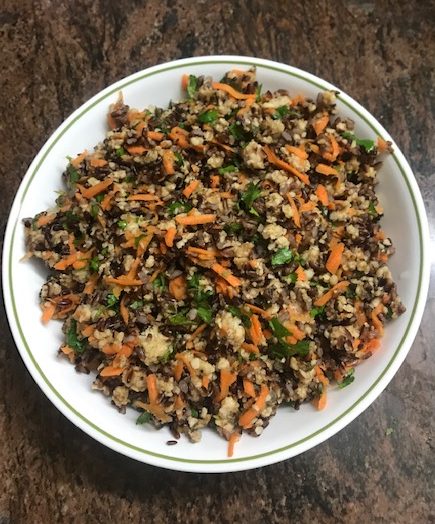
Experimenting with food comes easily to her. “Usually, even if someone gives me a recipe, I tweak it to suit my palate and the local availability of the ingredients,” she explains. “Recently, I decided to start experimenting with artisanal rice varieties of Tamil Nadu. The black rice or kavuni arisi is a favoured rice in Chettinad cuisine and is usually made into a halwa, payasam or idli. I decided to try something savoury with it and made it into a kavuni rice ulundu usili salad. Garnished with grated carrots and fresh green coriander, it is a fresh and wholesome meal in itself and is something I make very often now.”
Living in Canada and North India has also influenced Vasundhra’s culinary journey and expanded her horizons. “Since I lived in various cities in North India during my growing years, I got the opportunity to taste, if not cook, authentic North Indian food. My mother, being a very good cook, would learn all these recipes from the other army wives and so we were exposed to tasty food through our lives. If, as a child you are exposed to good food, then you will learn to cook reasonably well whether you are inclined to or not, just because your palate will not accept anything less.
With moving to Canada and being a vegetarian, there weren’t too many options to eat out in those days. So my friends and I would try out Italian, Mexican or Mediterranean dishes and thus my repertoire grew. When the kids came along, they gravitated to Italian or Mexican food, though I made it a point to make at least one Indian meal every day. Even today, for lunch we have either a South Indian meal or chapatis and some dal and subji. The evening meal is frequently something non-Indian.”
Vasundhra hasn’t stopped with food though. She makes cosmetics at home too. “When I was in Toronto,” she reminisces, “I used to buy some highly priced cosmetics, which boasted of ingredients that were very good for the skin. However, I realised that they were equally loaded with chemicals in the form of stabilisers and preservatives to give longer shelf life. I was using the same cosmetics when I returned to India and spending a lot of money on them. It was then that my sister in Toronto told me about this colleague of hers who has amazing skin and uses only argan oil. That started my quest for home-made cosmetics. My sister got me some argan oil from Toronto and then I researched essential oils that were good for the skin. Today, I have this concoction with argan oil, rosehip oil, avocado oil, frankincense, myrrh and many other essential oils, which my daughters and I use instead of night cream. Then I started making my own day cream, body lotion, hair oil, lip balm, herbal bath wash powder, herbal shampoo powder and many others. Recently, I started researching into commercial soaps and realised that they were almost always sourced from animal fat and loaded with chemicals. So, I have started making my own soap with my vasanaippodi and a shampoo bar with my shikakai. Today, we don’t use any store-bought cosmetics except face powder and lipstick. Maybe I need to look into that too!”
What makes Vasundhra’s venture even more unique though, is that even the packaging is 100% eco-friendly and totally plastic-free. “My powders are packed in paper bags and then again in recycled Kraft paper bags/boxes,” she says. “We encourage our customers to transfer the contents to airtight containers so they remain fresh. The labels are printed in black and white and smeared with turmeric paste to give it some colour. Even the glue we use is homemade with maida. So the packaging is fully compostable. Even for the soaps, I wrap the soap in heat-treated banana leaf and then in the Kraft paper box.”


As I write this article, Vasundhra has taken it further — she has even convinced the vegetable vendor supplying organic vegetables to her street to use fewer plastic bags and gradually move to cloth bags, and is actively campaigning for the use of steel bottles/flasks instead of plastic during the upcoming December Music Season.
Jayakrishnan is just as prolific as an artist. He has used a wide variety of mediums — acrylic on canvas, pen, pencil and charcoal. “That’s apart from my digital designing and illustration work,” he says. “Oil was a brief preoccupation but I always found myself hard pressed for time, and acrylic presented itself as a solution. I attempt all genres, but portraiture is my favourite.”


Creative challenges
I ask Jayakrishnan and Vasundhra about challenging projects they have worked on, and realise that they seem to revel in them! Jayakrishnan talks about the challenge of preparing for concerts and workshops with his guru Shri Neyveli Santhanagopalan. “He would call us a day in advance and share the list, and some of the compositions would be entirely new to us. This last-minute learning from Sir has been challenging, but entirely fulfilling.
On another occasion, I had a request from an organiser to sing Ghanta as the main ragam. This happened last year during the Navaratri season, when a temple in Kerala requested all its featured artists to sing the day’s Kamalamba Navavarnaam as the main piece, and I was assigned the kriti in Ghanta. It goes without saying that there is a dearth of references on how to handle this raga. But thanks to Neyveli Sir’s guidance, I was able to sing both raga alapana and swara prasthara for Ghanta.
Similarly, every sketch has been a challenge. Inspired by Keshav sir’s single-line sketches, I attempted a series such sketches myself. One of them was a portrait of Shri Kanchi Maha Periyava, done in spiral single-line style. I consider it one of the most challenging works I have taken up so far.”


Vasundhra has had a long and illustrious career in music, one in which she has worked on several challenging projects. “One was setting to tune and rhythm the Pasurappadi Ramayanam,” she says, “a compilation of the entire Ramayanam based on words taken entirely from the Divya Prabhanda pasurams. A work of Vyakyana Chakravarti Periyavachan Pillai, it is an awe-inspiring work, almost in prose form and of course, not set to metre. Periyavachan Pillai is the king of commentators. Vyakyana Chakravarti, as he is rightly called, is the only one to have given a commentary on all 4,000 Divya Prabhandams. One of his greatest contributions to Tamil literature is the Pasurappadi Ramayanam. This beautiful work covers all the six kaandams of the Ramayanam. Breaking it into workable segments, setting it to rhythm and then to music in 33 ragas was a challenge I readily accepted but found extremely demanding! Fortunately, that was completed successfully and presented on many a stage.

The second musically challenging project was 108 Divya Desams, a collaborative project with Dr Sudha Seshayyan, which we completed two years ago. She would give the commentary for each of the divya desams, and I would present the relevant pasurams and kritis on that desam. Identifying the appropriate song for many of the lesser-known divya desams was quite a challenge. Again, this was completed successfully over a period of two years and at the valedictory programme I also presented a song composed and tuned by me with the names of all the 108 divya desams.
My culinary challenges have been of a different kind. First of all, learning to cook after marriage was in itself a challenge! Then there were these marathon cooking sessions for the Thyagaraja Aradhana in Toronto where we would cook for hundreds of people. My husband and I would stay up all night cutting vegetables for making aviyal in huge Dutch ovens, or we would make venn pongal or vadai. The challenge was not only in the huge quantities involved, but also in maintaining consistent quality, as we had to cook in multiple lots. It required not only dexterity and elbow grease to make large quantities but also strict quality control to ensure consistency in each batch. Along with this, I would be teaching and rehearsing Pancharathnam singing with my students for the next day’s Aradhana, plus hosting out-of-town visitors for the Aradhana! And let us not forget, looking after the kids who went extra-crazy at this time because it was like a weekend of carnival with all their friends hanging out in one home! We would also frequently have huge social gatherings at each other’s homes for different festivals, wherein it was quite common to have 40+ guests — and that would mean cooking a really fancy meal, plus the required bhakshanams. Looking back, I really don’t know how I did it!”

From ideation to implementation
A concert is often the result of several hours of preparation (and of course, countless hours of music training and practice). I’m curious to know what kind of behind-the-scenes work goes into a painting and a new recipe.
“I don’t like to paint or work under pressure,” Jayakrishnan says. “I have a tendency to wait for the urge to paint to conquer me before I proceed with a work. Before painting there are all sorts of uncertainties as to how to visualise, how to compose, which colour palette to use, etc., which one can manage through a few rough drafts. But ultimately, the concept/idea has to soak in, register as a visualised image, and flow through the mind and hands, which requires one to prepare by referring, doing rough drafts and thinking about the concept before the urge to paint takes over the self.
I also think that one should finally let oneself surrender to the superior force that I believe works through us. In 2015, after the floods in Chennai, we had a termite attack at home — termites preyed upon our living room showcase almost in entirety. We had the termites and the plywood remnants removed, and there we were, staring at a blank new space. I thought about having a new showcase made, but something prevented that from happening, and I decided to do a painting there instead. Initially I wished to do a Kerala mural-style painting of Shri Mudduswamy Dikshitar, my hero. It so happened that I gave up that idea. Then I thought of a Saraswati mural — it began as an idea, but developed through several references, was shaped by a few rough versions and materialised through a two-week-long process. The painting now decorates our living room and is the background for the ‘Vasantham’ series of concerts we organise at home. It was destined for Saraswati devi to find her way to that wall, and destiny only used me as an instrument.”

Vasundhra says she tries to include something new in all her concerts, so there is the excitement of first coming up with the new item and then practising, polishing and presenting it on the stage. “Since I have been doing a lot of thematic programmes and also katha kutcheri programmes on my own, a huge amount of work is involved — in terms of research, getting clarification from scholars, identifying suitable poetry/songs, and finally presenting it in a coherent manner. The sense of satisfaction derived from these programmes is immense. Some of my programmes include Pasurappadi Ramayanam, Nava Vidha Ramayanam, Urmila, Indrajit, Sulochana, Akrooran and Vidura,” she says.
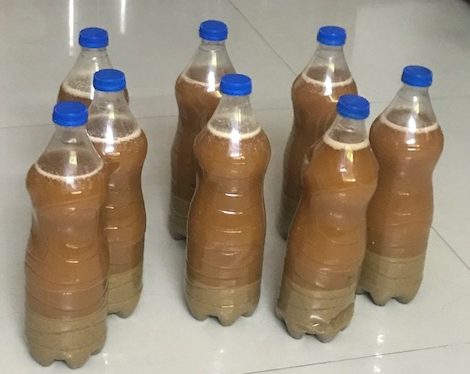
In the culinary field, Vasundhra tries to come up with her own recipes. “One such recipe is the Golden Elixir, our signature product, which in my opinion is a must for everyone, especially those who use their voice frequently — musicians, public speakers, teachers, doctors, etc. The process of creating this used to keep me researching well into the night. I started reading about herbs that are good for the voice and respiratory system, as well as for general health and well-being, then began the process of procuring them and then trying them out in different ratios to come up with what we now market as Golden Elixir. Everyone who has bought it has it as a daily bedtime drink, and their children have it as well! To date, it is our fastest selling product, and I make at least 4–5 kg every ten days. Coming up with this drink was really exciting, challenging and ultimately highly satisfying,” she smiles, before continuing. “With soaps again, it has been a very exciting journey. My kitchen — fortunately I have a second kitchen upstairs which had not been in use — has been turned into a laboratory where I experiment with my concoctions! After a few months of experimenting, I think I have hit the correct formula for soaps and now I have racks and racks of soaps that are curing for four weeks before they can be used. I recently wrote a blog about commercial soaps versus hand-made soaps and this has sparked great interest among the readers who are now wanting to buy my hand-made soaps.”
Making time for their passions

Vasundhra’s ability to ‘compartmentalise’, in order to make time for all her passions, is awe-inspiring, especially considering her highly successful career in the corporate sector. “I did my CMA (Certified Management Accountant) in Toronto and worked with Bell Canada,” she reminisces. “Upon returning to India I was with USAID in Delhi and then was a VP-Business Development with an MNC in Chennai. Our lives have always been fully packed with activity through the day. In fact, my father would ask us all each night as to what we had achieved that day. He had very high expectations of us because he set the same standard for himself. So juggling multiple activities and playing different roles came naturally. The trick is to compartmentalise and focus on just whatever you are doing at that moment. It helped that my husband is very hands-on with the children and household chores. So multitasking and making time for whatever I wanted to do came easily.”

Jayakrishnan is currently pursuing his PhD at IIT Madras in Media Semiotics. Semiotics, he explains, is the study of signs, and he works on the grammar of visual signs in media. “I have a Masters in Electronic Media – Journalism and was engaged briefly in the electronic media journalism before moving to academics again,” he says. Jayakrishnan sings everyday, and as much as he can. When he isn’t singing, he’s listening to music or, sometimes, playing the veena. “Art requires a lot of hard work, patience and dedication. When you give it that much, it returns to you in the form of refinement. But the degree of refinement you have achieved remains with you for a little longer than it would with music — because if you don’t sing for two days, it will reflect on your vocal dynamics! The brush will cooperate a little more than your voice, in my opinion. But I haven’t and won’t ever dare test its elastic limits,” he laughs.
A sense of fulfilment
Vasundhra and Jayakrishnan both agree that pursuing their multiple passions leaves them with a sense of fulfilment. “Both cooking and music are creative processes,” Vasundhra says, “both give extreme satisfaction, albeit of different kinds. Most importantly, you have to have a passion for both. Unless you put your heart into it, neither food nor music will turn out well. When you cook, it is mostly for family and friends, and your ‘audience’ is small. But the happiness you get from cooking for your loved ones is unparalleled. Music, on the other hand, is for a larger audience and though introspective is actually a process of carrying the audience along with you in your exploration. The satisfaction you get at the end of a concert is of a different kind. For me personally, if I have to research something for a music project or learn a new song or explore certain nuances of a raga or create a challenging pallavi or korvai, I am as excited about it as I am when trying out a new recipe or even coming up with my own recipe. Not just in cooking food but also in creating beauty products. In both cases I get so excited that I think about it all night and can’t wait to get up in the morning to try it out!”
Jayakrishnan looks at each — art and music — as a continuation of the other. “I don’t think I can ever differentiate between the pleasure or bliss I derive from engaging in either of the two,” he says. “Both engulf me equally. Sometimes while practising, a phrase that comes to me can impact me so much that I would continue singing that raga for hours together. It is almost as deep as meditation. With art too, the same happens. After sitting for hours with a painting, I tend to forget everything else.”

The road ahead
What does Jayakrishnan wish to do with his music and art? He is lost in thought for a few moments, before answering. “All that I yearn for, is to escape from mediocrity and attain a superior means of expression in each of the artistic skills I am bestowed with, so that I do justice to the fact that art has given me the duty of expressing it through me. It is also my wish to find a common means of expressing music and art and hence attain a harmonious unison of the two.”

Vasundhra’s objectives are entirely altruistic. “Through music one is able to reach people and connect with them. It is a medically proven fact that music has a therapeutic effect on people and that children with special needs respond particularly well to music. This Vijayadashami I have started teaching music to children with special needs at Sri Arunodayam Charitable Trust, Kolathur. To be able to help even one child through music would indeed be gratifying. With A Pinch of Turmeric, I am hoping to do something similar, that is, provide financial assistance to such children. If the children benefit, and I benefit because of doing something that makes me happy, and the people who buy the products benefit because they get good, healthy, home-made products, then everyone wins, isn’t it?”
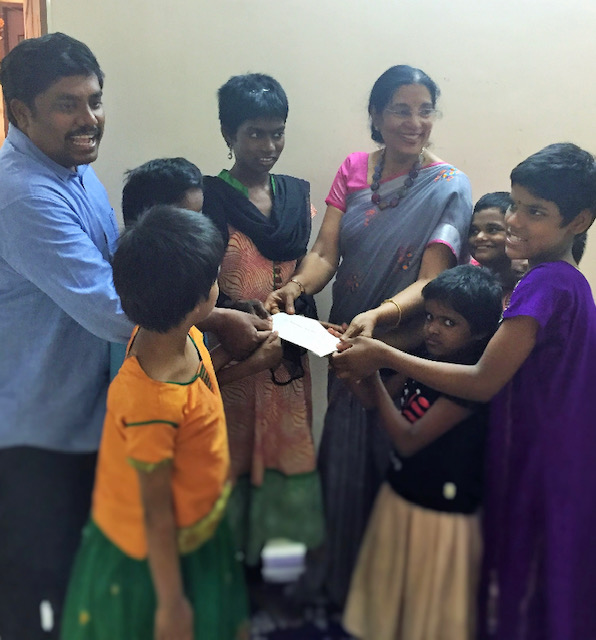
To Vasundhra, Jayakrishnan and all the other musicians pursuing multiple passions — godspeed, and thank you for being an inspiration!


excellent spell-bound
LikeLike
Excellent drawings by Mr. Jayakrishnan
LikeLike
Both are God gifted personalities, without divine intervention they might not reach to this level. The narration is fantastic visualises to me their entire life. Very rare to come across such humble personalities reaching Himalayan heights in all their activities. It’s a real inspiration to whoever reads this article. At my age of 78, i feel i have wasted my entire life and my performance so far is less than 0.1% of the tgreat Indians. I salute both and proud that i live during their life time:my feelings are from my heart and not an exaggeration.
LikeLike